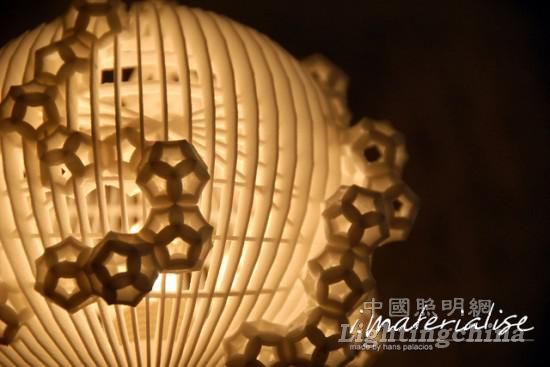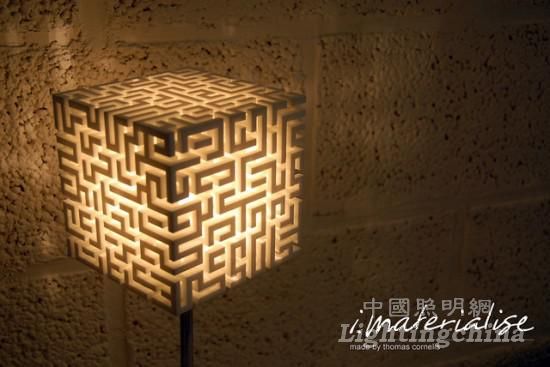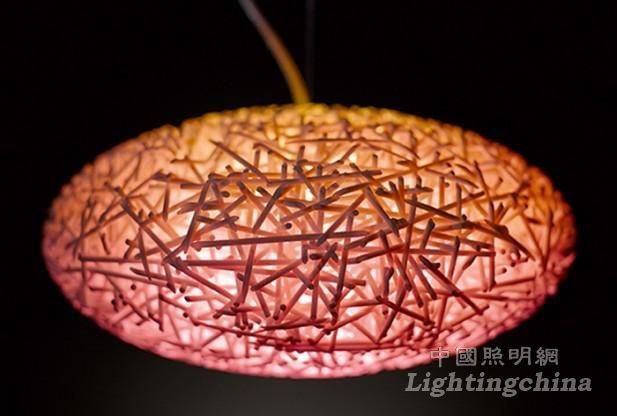How far is 3D printing from us?
On April 7th, 2014, on the last day of the small holiday, the author gave up the rest and participated in the “3D Printer Application Lecture†sponsored by Nikkei BP. It has a comprehensive view on the development, application status and beautiful prospects of 3D printing technology. To understanding. The application section has a picture of a beautifully colored lampshade. I don't want to see the two lampshades of Philips 3D printing appearing at the Frankfurt show after a day – 3D printing has come to us.
But what is 3D printing? This molding method is called “addition processingâ€. Unlike the traditional “subtractive processingâ€, the traditional processing method starts from the opening of the material and performs various subtraction methods on the raw materials: drilling, hollowing, and milling. 3D printing is to stack the materials three-dimensionally according to the original design, complete the manufacturing process, the material stacking process, that is, the addition process.
3D printing classification
According to the materials used in 3D printing, 3D printing can be classified as follows:
1. SLA (Stereo Lithography Apparatus), stereoscopic light curing, raw material is liquid resin, solidified under UV irradiation. Processing accuracy can reach 0.02mm.
Second, SLS (Selected Laser Sintering) selective laser sintering method, the raw materials can be thermoplastic, metal powder, ceramic powder, etc., with the laser head for local sintering.
Third, FDM (Fused Deposition Modeling) melt extrusion method, the raw material can be thermoplastic, eutectic system metal, edible material, extruded by heating the material, and then solidified. This method has the lowest equipment cost and low consumables, but the accuracy is low and can only reach 0.2mm.
Fourth, 3DP three-dimensional printing, using powder raw materials, three-dimensional printing and post-forming. Raw materials such as gypsum can be formed by this method.
5. LOM (Laminated Object Manufacturing) lamination method, the material can be pressed into a layered material such as paper, metal film or plastic film. Currently this method is used less.
3D printing advantages and disadvantages analysis
3D printing completely overturns the traditional manufacturing concepts and processes, blurs the boundaries between industry and technology, and spans the boundaries between traditional upstream and downstream. The benefits are faster, lower cost, and more flexible. Ideas can be quickly implemented with 3D printers while reducing time and other costs. With 3D printers, everyone can be a designer, a manufacturer, and create a unique product that is personalized. So some people say that you can go to space without taking things, just bring a 3D printer. Closer to home, I will analyze the advantages and disadvantages of 3D printing.
First, the advantage
1. The device is easy to operate, digitally driven, no programming required, reducing operator requirements and costs.
2. It can realize complex structure, improve the manufacturable range, and realize the design that cannot be realized by traditional processing.
3. The equipment runs automatically, and no control or adjustment is required in the middle.
4. Design and manufacturing integration, combining digital, artificial intelligence and new materials with the latest cutting-edge technology, promoting cooperation and application between different disciplines.
5. Reduce manufacturing costs and reduce energy consumption.
6. Create something unique.
Second, shortcomings
3D printing sounds beautiful, but there are still some problems, such as:
1. Low precision, the accuracy of the melting method is 0.2mm, and the photocuring method is 0.02mm, but for many products, this precision is too low.
2. Multicolor implementation is limited. At the Guangzhou show, the light-cured materials are currently stable only in the red series and colorless. The fusion and transition of different colors is far apart from other manufacturing methods.
3. Printing efficiency is low, and it is acceptable in a small number of fields, but rapid mass production depends on traditional manufacturing methods.
4. Equipment and consumables prices are still high.
5.3D software popularity still takes time, and ordinary users need to learn and practice from learning to using to achieve ideas.
3D printing application field
First, the manufacturing industry. Used for product development, trial production, and speed up product development. It is also possible to turn consumers into product manufacturers and increase consumer participation in products. For example, Nokia's mobile phone case, the manufacturer developed design files, designed by consumers themselves, using a 3D printer to achieve a unique mobile phone case.
Second, the building. Building units can be made with large printers, assembled on site, or building models can be used to display and research, such as Chiba University, Japan, to build towers, to understand the problems in the assembly process in advance.
Third, the medical field. You can convert CT and other files into 3D models to simulate visceral or skeletal conditions, to diagnose, inform patients, or train doctors. It can also be used to record changes. A hospital in Japan provided a record of the process of growing up the fetus, and printed the appearance of the fetus as a commemoration with a 3D printer.
Fourth, the art field. Quickly implement the artist's design or make miniature sculptures to see the contrasting effect; it can also be used to make replicas of precious artwork for close-up touch.
Five, food. You can create unique chocolates, colorful candies, etc., to achieve unlimited creativity.
3D printing for lighting
Materialise in Belgium is currently the world's largest 3D printer company, offering equipment and product realization solutions.
The shape design of 3D lamps comes from nature, art, and even fingerprints. The source of creativity is everywhere.


Philips' 3D printed lights at the Frankfurt Lighting Show combine Hue's light changes for a very special experience.


(This article is a contributor: Dr. Chen Haiying)
Editor: Liu Hai
Ultrasonic processing is a special processing tool that uses ultrasonic frequency to vibrate at small amplitudes, and through the impact of the abrasive free of liquid between it and the workpiece on the processed surface, the surface of the workpiece material is gradually broken.
Yuhai company is engaged in produce high performance Piezoelectric Elements,
Piezoelectric Rings For Ultrasonic Machining
Custom Hifu Piezo Parts,Hifu Ultrasonic Focusing Part,Piezo Crystal For Hifu,Cheap Hifu Transducer
Zibo Yuhai Electronic Ceramic Co., Ltd. , https://www.yhpiezo.com
